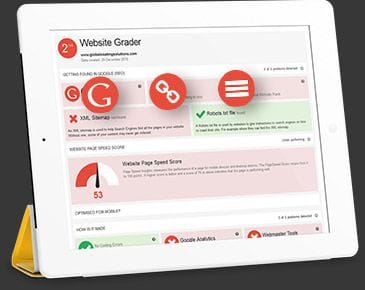The Hidden Conversions You Should Be Tracking
)
Don't get me wrong - I know the purpose of a marketing strategy is to grow your business, and that can only happen when you increase your revenue through products and/or service being purchased. However, consumers are more informed than ever thanks to the Internet, and having the product or service they are looking for is no longer enough. Consumers want to purchase from businesses that are engaged, and are less "me" focused, and more "you" (the customer) focused.
It's time to broaden your digital marketing strategy to acknowledge more than just last interaction conversions. A multi-channel marketing approach will not only increase your client base, but also improve customer retention.The challenge? Seeing the value in the "other conversions."
What Are The "Other Conversions?"
As marketers, we understand the importance of engagement marketing. This is achieved through social media, email marketing, content marketing (like blogs), and of course, your website design and functionality.
The "other conversions" are actions taken by a potential client that aren't necessarily an online purchase or a contact form on your website, but still demonstrate the interest a potential client has in your business.
We call them "engagement conversions."Average Time on Site
The average time a visitor spends on your site is a valuable engagement conversion that many businesses over-look. "Why does it matter if they spent 4 minutes on my website if they didn't buy anything?" Sound familiar? Time on site is important because it validates that your website is interesting, engaging and users want to spend time on it. New visitors to your website are less likely to spend a significant amount of time on your website than return visitors, though return visitors are more likely to convert.
Page Views per a Visit
How many pages does the average visitor look at when they come to your website? This ties in with the time spent on site. If you have lots of products, service pages and blogs that are interesting to read, visitors are more likely to surf your website and view more content. The more information you provide about your business, and the more you can establish yourself as an expert with blogs, the better your odds are of gaining new customers.
Frequency of Visits
Frequency reports can be found in your Google Analytics report, identifying how often a single user visits your website. This is an important engagement conversion to track because it demonstrates how engaged clients and potential clients are with your website, your content, and your brand.
Bounce Rate
Bounce rate is the percentage of visitors that come to your website and leave without taking any further action in an allotted period of time. A low bounce rate indicates your website is capturing your audience's attention immediately, and they are staying on your website to further investigate your products and services.
Branded Searches and Direct Traffic
Often when working with a search engine optimization company, a business ignores the branded search results and the direct traffic to the site. They typically focus on the keywords related to their products and services. An increase in direct traffic and searches related to your brand confirms that your brand is growing and people are associating your brand with the products or services they are looking for. Think about Apple. No one searches for "portable electronic device that plays music." We just search "iPod" or go directly to the Apple website. The brand has become the search term for the product.
Email Marketing Stats
Email marketing stats are a great indication of consumer engagement. Understanding if your open and click rates are going up on your emails will tell you whether your database is interested in the information you are sharing with them each month.
Social Engagement
Social media is an extremely important part of any marketing strategy. Whether your business is B2C or B2B, social media allows you to give a voice to your business while staying in line with your corporate identity. Social media grows brand recognition, makes your business approachable, and provides a great platform to share content. Social media follows, likes and shares are engagement conversions that endorse consumer interest in your brand; people engaged with your social media posts are providing you with free advertising to their followers.
Although these engagement conversions are not a sale, they should be counted as a win for your marketing strategy. An increase in these areas are likely to lead to an increase in sales for your business. It's important to have a multi-channel marketing strategy that every aspect of your businesses is integrated with. Consult with a Bloomtools web consultant today to learn how we can track all your conversions and help your business bloom!) Author:Boaz Willinger
Author:Boaz Willinger| Tags:Online MarketingContent MarketingCustomer EngagementBrandingSocial MediaWebsite Performance |




)
)
)
